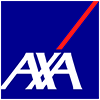When I grow up, I want to be a platform
Who is this presentation for?
Architects, developersLevel
Description
As engineers, once we start having more than one (micro)service or product in our architecture, we start thinking about sharing code, functionality, and seamless user experiences between systems. That’s the start of a platform. But you have so many decisions to make, such as deciding what features should be part of the platform and when; if you should go lightweight like drop-in libraries that are quick to adopt or heavyweight like frameworks that give a better integrated developer (and user) experience; how much extensibility to build in; how to make your platform extensible; how to address the classic hockey stick adoption pattern on your services; and if you change your organization structure or if the organization structure dictates the platform.
Sidney Shek and Diogo Lucas describe a number of patterns (and anti-patterns) for designing a platform they’ve seen and implemented both from industry and as part of the platform powering Atlassian Cloud.
Prerequisite knowledge
- Familiarity with microservice architectures
What you'll learn
- Decide when to start thinking about platform architecture
- Discover patterns for building extensible platform components and tips about when and how to use them (e.g., shared libraries, sidecars, pipelines, and layered services to manage dependencies) and anti-patterns to be aware of (e.g., building a platform around only known use cases, inflexible platforms, and coupling consumers to platform
- Learn how platform architecture impacts (and is impacted by) by organization structure

Sidney Shek
Atlassian
Sidney Shek is an architect at Atlassian, where he oversees the transformation of identity systems into a massively scalable and flexible platform for users, product developers, and the ecosystem, with over 10 years’ experience in developing and architecting real-time and mission-critical software systems across many industries ranging from financial services to manufacturing. He likes challenging traditional constraints and applying the latest R&D and technologies in elegant yet reliable solutions to real-world problems. He believes that functional programming principles like immutable data, type-safety, and idempotence need to be ingrained in architects and programmers alike.

Diogo Lucas
Atlassian
Diogo Lucas is a senior architect at Atlassian, and he sucks at writing about himself and can’t wait for the day he’ll be famous enough that someone will do it for him. And bring perfect lattes with lovely art on top. Coming to think of it, scratch the writing, just the latte, please. Ahem, but I—nope, he—digresses. Whenever he’s not struggling with the hard work of describing who he is (hm, could he get his mother to do it? Nah, she’d write about that embarrassing story of when he was 9), he does software architecture stuff, which is mostly about drawing lots of arrows and boxes in a whiteboard (bonus points if you put a cloud in or two—they’re all the rage these days), talking to lots of people (sometimes involving coffee, although nobody ever volunteers to bring this poor guy a latte), and coding (yes, you still have to do that as an architect). Oh, he’s also a teacher. If you came here for the catchy words, here’s some of the stuff he’s been involved with: architecture (patterns, integration, event-driven, modernization, arch patterns, and culture), API (strategy, design, and platform), and Agile (DevOps, CI/CD, Kanban, and Agile transformation).
Gold Sponsor
Silver Sponsors
Exhibitor
Innovator
Supporter
Diversity & Inclusion Sponsor
Contact us
confreg@oreilly.com
For conference registration information and customer service
partners@oreilly.com
For more information on community discounts and trade opportunities with O’Reilly conferences
Become a sponsor
For information on exhibiting or sponsoring a conference
pr@oreilly.com
For media/analyst press inquires



